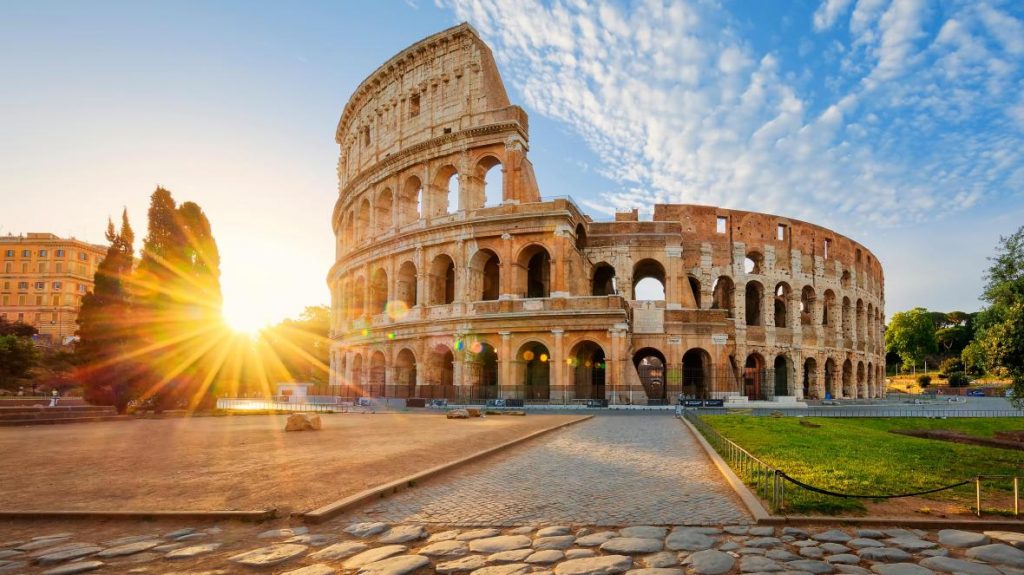
The first finds of human settlements date back to the Paleolithic, around 20,000 BC The Italian peninsula is inhabited by different ethnic groups: Ligurians, Venetics, Latins, Umbrians, Sardis, Sicilians. The geographical position of Italy in the center of the Mediterranean Sea favors relations with the surrounding regions: Phoenicians, Carthaginians and Greeks founded colonies, enriching the native culture. The Etruscan civilization flourished starting from the tenth century BC, and was definitively incorporated into the Roman civilization in 396 BC According to tradition, Rome was founded in 753 BC, but its supremacy will begin from the third century BC. C. extending over the entire peninsula and most of Europe.
The long dominion of Rome (from the third century BC to the fifth century AD) leaves extraordinary evidence: cities, temples, monuments, theaters, bridges, roads, aqueducts. In 476 AD the barbarian Odoacer puts an end to the Roman Empire by proclaiming himself King of Italy. It is the beginning of the Middle Ages that will lead to the territorial fragmentation of the Italian peninsula and the long domination of foreign peoples. The authority of the bishop of Rome and the importance of the nascent Church State grows. While the North is torn apart by wars between Popes and Emperors, Sicily is invaded by the Arabs and the Normans. Between the end of the 11th century and At the beginning of the 12th, demographic and economic growth favors the development of independent city-states in the Center-North: Venice, Florence, Siena, Genoa, Milan. Families of merchants and bankers govern the fate of these small states. Italy becomes a thriving country of arts and commerce. At the beginning of 1300 Dante wrote the Divine Comedy, the greatest poem of Italian literature.
In the following centuries, many of these small independent states will not resist the invasions of large states such as Spain, France and Austria. Italy, disputed by the major European powers, becomes a theater of continuous wars. In 1796 Napoleon conquered a large part of the peninsula, but upon his defeat the Congress of Vienna in 1815 re-established Austrian control. Only the small kingdom of Piedmont remains independent and leads the great Risorgimento movement that will lead to the definitive unity of Italy. On 17 July 1861 Vittorio Emanuele II was proclaimed King of Italy.
After the Second World War, in 1946, a popular referendum abolished the monarchy and the Republic was proclaimed. The territory is currently divided administratively into 20 regions.
